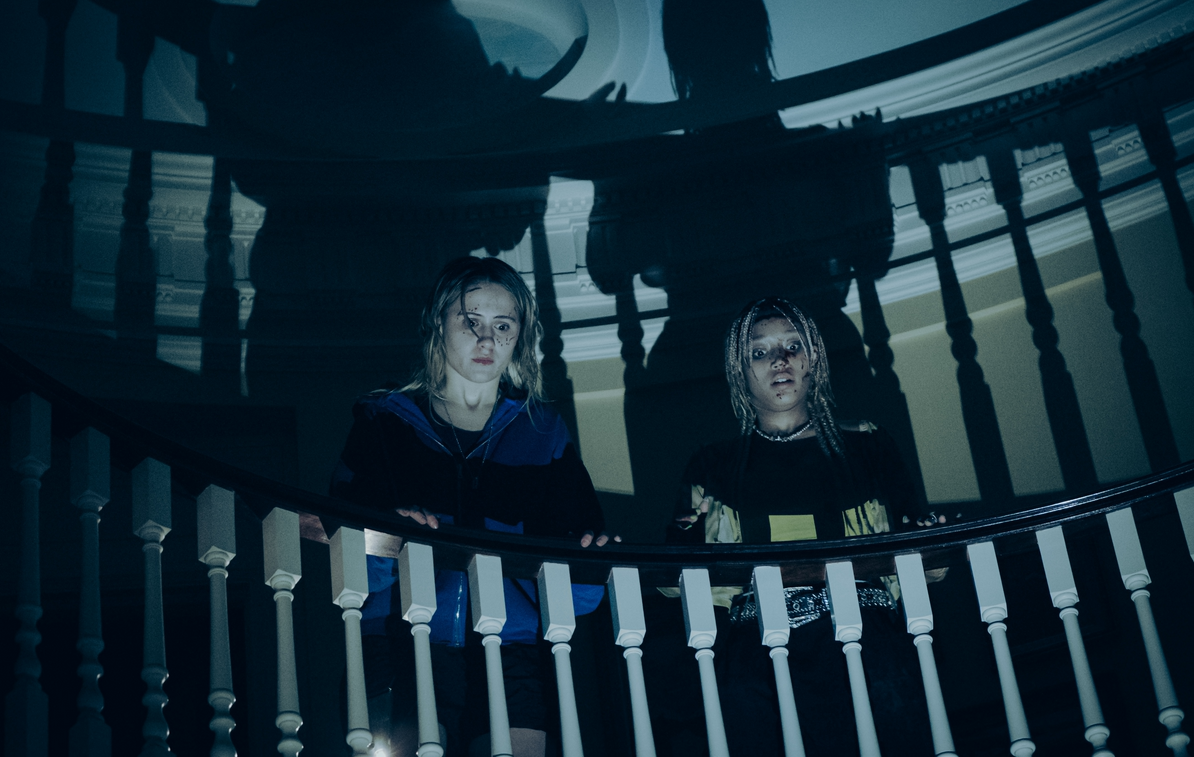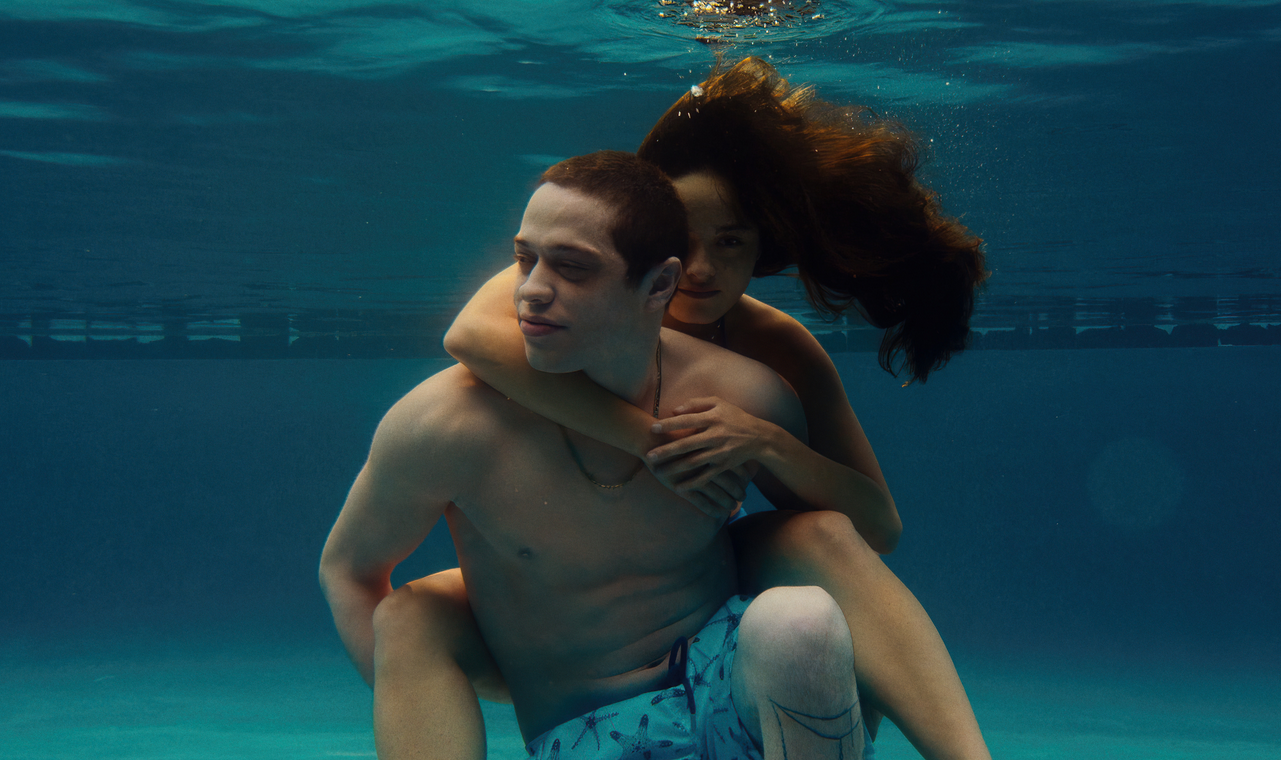The culmination of Gen Z and the digital age comes together in A24’s newest slasher whodunit, Bodies Bodies Bodies. Horror films aren’t afraid to poke fun at society, and it’s a movie genre that tends to showcase a hyper-exaggerated world of its characters. In the case of Bodies Bodies Bodies, it’s filled to the brim with social satire, witty dialogue, and a new generation of horror characters inspired by Gen Z tropes. It’s a blend of classic slasher tones with A24’s vision of a Gen Z aesthetic. Bodies Bodies Bodies does well with injecting that humor into the mix of its horror whodunit, although it stumbles along the way in this darkly-set flick.
The film could best be described as a “Gen Z-inspired Scream” mixed with And Then There Were None by Agatha Christie. Bodies Bodies Bodies focuses on a group of wealthy twenty-something friends partying it up in a mansion deep in the woods. Plenty of drinks, drugs, and underlining tension fill the party. When a hurricane rolls in, the group decides to play their favorite party game, which is a variation of “Wink Murder” and “Werewolf” set in the dark, to pass the time. Once the group discovers their first *real* dead body, the game quickly descends into a night of chaos, deaths, and secrets being exposed. It’s a classic horror theme of a single location cut off from the rest of the world as the killer picks them off one-by-one.
Bodies Bodies Bodies uses this premise and setting effectively as it quickly ramps up the tension. You feel the sense of dread and claustrophobia set in as the group is unable to escape the mansion during the height of the storm. The dark setting (naturally, the storm knocks out the power) adds to the unnerving unknown of what the group might discover around every corner. The decision to use their phones as flashlights was a clever choice as it felt relatable for these characters and a natural answer for how they’d use their phones during this scenario. Though, how no one’s phone battery died from the constant use of the flashlight might be the biggest mystery of the film by far.
The balance of light vs. darkness was an interesting aesthetic choice as the lighting pieces seemed deliberate and thought out. With the mansion completely dark, we (like the characters) rely on the light from the phones to shine a path down every dark hallway. Wherever the camera points, we get a sense of the character’s POV where they were focused on (or hiding). And the subtle lighting choices within some of the rooms or from characters seemed to emphasize the tone of the scene. The lighting from within the gym, the glowsticks characters wore, and the flashing red hallway light are three that stand out the most. (No spoilers for how these play a part!)

Bodies Bodies Bodies had a strong cast of actors playing arguably terrible people. Each role has its own vibe for how they fit into the friend group and the tension that connects them. We had Bee (played by Maria Bakalova), a working-class woman dating Sophie (Amandla Stenberg), who was meeting her girlfriend’s friends for the first time. Sophie is a former wild child and party animal who has distanced herself after a stint in rehab. Making up the rest of the friend group is rich asshole David (Pete Davidson), his actress girlfriend Emma (Chase Sui Wonders), airheaded podcaster Alice (Rachel Sennott), and her older boyfriend Greg (Lee Pace), and the headstrong Jordan (Myha’la Herrold). No two characters were similar in their personalities, but it became very clear early on which characters the writers wanted to flesh out more and have fun with their writing. Sennott’s Alice was a clear standout.
The dialogue plays off the social satire by reinforcing many of the themes and stereotypes pop culture connects to Gen Z. A character would throw out a word or phrase to get a reaction because it’s so well-known in today’s pop culture. This adds to the dark comedic tone of the film and what the film wanted to achieve with its cast of characters.
The problem is that Bodies Bodies Bodies focuses more on this aspect than fleshing out its roles and expanding the plot. The film would’ve benefited by diving deeper into its characters to show us more of their history/connections. Sure, we’re thrown right into the story to capture the feeling of Bee’s awkward discomfort and for us to dislike this group of friends, which successfully worked by the film’s end. However, there needed to be more foundation and nuances for why these characters, who are supposedly best friends, hate each other. Simply being surface-level archetypes isn’t enough.
The main plot needed more nuances to add to the story’s weight. For a runtime of 95 minutes, not much happens in Bodies Bodies Bodies outside of the killer picking off the group one-by-one. The theme of paranoia and survival carries the film, which showcases an interesting look into friend group dynamics and how quickly the “truth” can tear friends apart. One of the strongest elements of the film is how it explores the fallout the friends suffer as they lash out and succumb to finger-pointing over who could be the killer.
Advertisement

These dynamics only came out at surface level or when the plot needs it to happen. Sometimes a character would divulge something exposing to cause a spontaneous wave of drama, but there was no peppering of their tension in the scenes beforehand. The underlining tension could’ve been woven in throughout to see a growing hatred. It would’ve been great to have more of these layers revealed and how the friends interacted. Those truths would’ve fleshed out scenes to make the screen time more impactful and give characters more layers to their personalities.
Bodies Bodies Bodies is an aesthetically-pleasing slasher filled with witty dialogue and unlikable characters. However, the lack of layers and character development will leave you wanting more.
Bodies Bodies Bodies is out in theaters now. Watch the trailer here.
Advertisement
Advertisement







